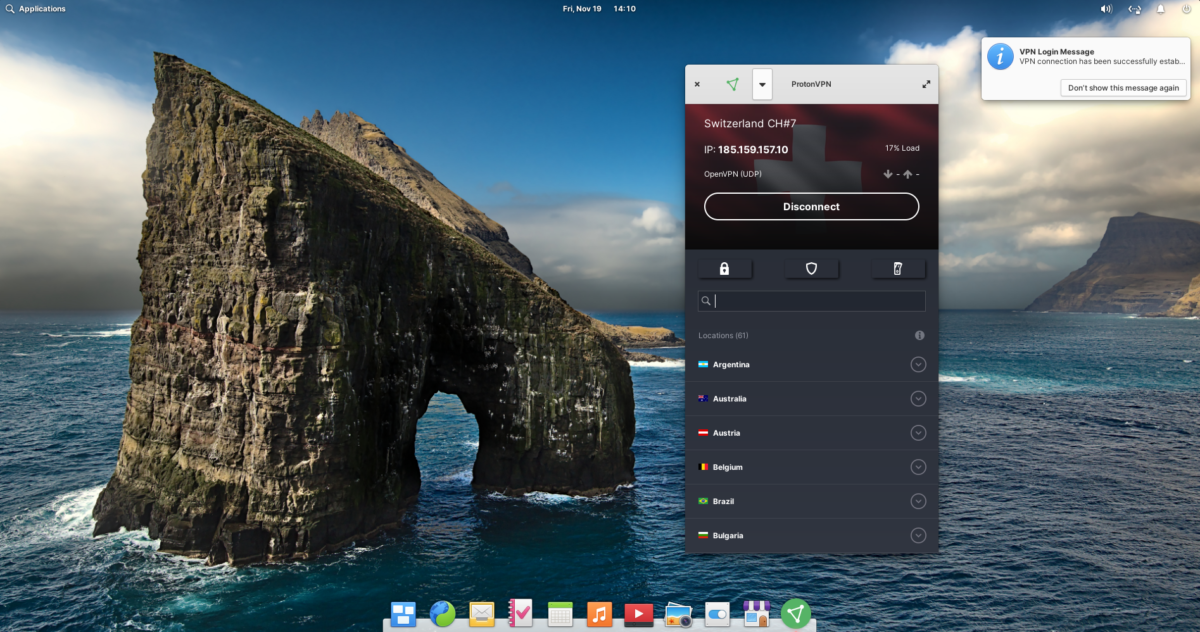

- #Elementary os free download how to#
- #Elementary os free download install#
- #Elementary os free download full#
Having played with elementary OS since version. elementary OS clearly sweats the small stuff, paying careful attention to typography, icon design, color use, shading, and so on, which ends up creating a kind of feel that's perhaps reminiscent of macOS. elementary OS has taken some flack over the years for being heavily macOS-inspired and it does have some element of macOS-the dock, a column view in Files (which KDE used to offer as well), and, perhaps more than anything else an obsession with details. That will help downstream distros like elementary OS, as well as others like Linux Mint Cinnamon edition (which also runs poorly in a virtual machine).Įlementary OS also sports a dock-style app launcher along the bottom of the screen that is, well, somewhat macOS-ish. One of the big lessons Canonical has learned from collecting hardware metrics is that Ubuntu ends up in virtual machines a lot, so improvements are apparently in the works. GTK requires hardware acceleration for animations, which does not currently work in Virtualbox. According to Foré, it's an upstream problem. If you want to know what it's like to actually use all that stuff, read on.īefore getting started, Linux users wanting to try elementary OS should be forewarned: it doesn't work very well in a virtual machine. If you want to know everything that's new, Blaede's notes are worth a read. Enough features, in fact, that the release notes, written by elementary OS's Cassidy James Blaede, are an impressive John Sircusa-style essay of some 8,000 words. Whatever the version number may be, one thing is for sure: there's ton of new stuff in Juno. (Of course, the elementary OS model doesn't necessarily work at the scale of Red Hat, but it doesn't have to in order to sustain elementary OS.) Advertisement If I were an open source project heavily dependent on contributions from Red Hat employees, I might right about now have a closer look at how elementary OS's funding model works.

#Elementary os free download how to#
It's not Canonical by any means, but it is self-sustaining and it has a model for how to continue sustaining itself, which is more than a lot of open source projects can say.
#Elementary os free download full#
Today, elementary OS is a bootstrapped business with quite a few full time employees. I bring it up not to revisit the controversy, but because the funding model elementary OS established early on has succeeded. It was poorly worded, but as with all things in Linux, it was something of a tempest in a teapot even at the time and it's well behind the project at this point. When I spoke with Foré, he was quick to point out how little experience the team had with PR at the time (he clearly regretted the post).

Most of the kerfuffle was not about the money, but rather the wording of the post, which essentially called non-paying users thieves. Unfortunately for elementary OS, a blog post about the pay-what-you-want model initially rubbed a lot of people in the Linux community the wrong way. The project took Ubuntu as a base and began layering in their custom apps, and the highly refined look and feel of elementary OS was born.Įlementary OS (codename version Luna) launched in 2012 with considerable fanfare thanks to its revolutionary idea of asking users to pay for it. But there was enough momentum behind the project that Foré decided the logical thing to do was for the group to create their own distribution.
#Elementary os free download install#
Eventually, things got to the point where it became more and more cumbersome for users to install everything. Over the years, the elementary project continued to grow and encompassed ever more apps and ever more customizations for the desktop. As with most open source projects, the borrowing went both ways: Ubuntu's Humanity theme was a fork of elementary OS's icon set. From a set of icons designed to improve the look of Ubuntu's then GNOME 2 desktop, the elementary project expanded to include some custom apps, including a fork of the default GNOME files app, Nautilus, called nautilus-elementary. (Yes, seriously.) If ever there was a group of developers who started at the bottom and worked their way up to the top, it's Daniel Foré and the rest of today's elementary OS team. Further Reading Ubuntu 18.04: Unity is gone, GNOME is back-and Ubuntu has never been betterĮlementary OS began life over a decade ago as a set of icons.


 0 kommentar(er)
0 kommentar(er)
